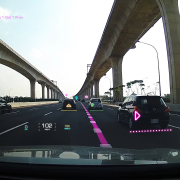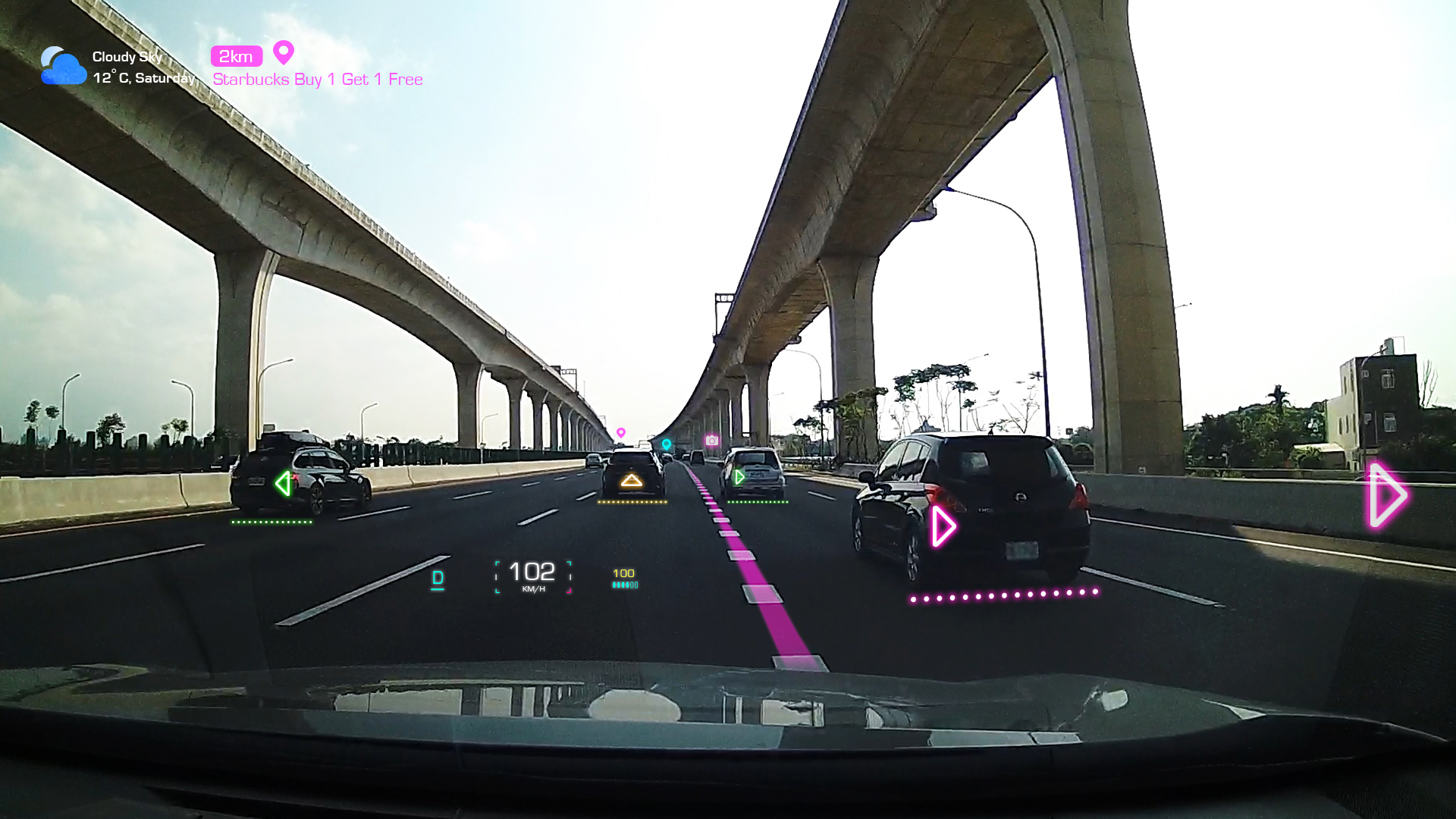Augmented Reality Head-Up Display (AR HUD) Become the Trend of Head-Up Display
Head-Up Display Overview: from HUD to Augmented Reality HUD
The Head-Up Display (HUD) projects important driving information such as speed and navigation on the windshield in front of the driver, so that the vehicle safety information can be seen without turning around and looking down at the cluster.
HUD has been used in automobiles for nearly ten years to provide active safety functions. From the emergence of CHUD and WHUD one after another the Augmented Reality (AR) technology has gradually matured. The application of AR images to head-up displays has brought significant changes to HUD.
How Augmented Reality HUD works? AR HUD Features Introduction
When AR technology is integrated into the HUD and applied to driving, the windshield is used as the display screen, which has a larger field of view (FOV) and a longer imaging distance (VID) to provide a distance virtual image. Evolving 2D into 3D images can perfectly realize real scene fusion. Combined with ADAS and sensor functions, it provides 3D virtual imaging driving safety reminders, vehicle navigation, speed, speed limit indication, road warning, and other functions, which are displayed on the windshield in front of the driver and regarded as the third screen of the vehicle to provide a safe driving experience.
Most HUD products have limited optical technologies and application
There are four main optical technologies applied to HUD, such as TFT (Thin Film Transistor), DLP (Digital Light Processing), LCOS (Liquid Crystal on Silicon), and LBS (Laser Beam Scanning).
At present, most HUD products on the market use TFT and DLP technology. The images put in are 2D images, which cannot display the real-world fit of AR amplification. The brightness and contrast of the light sources of these two optical technologies are insufficient, which will mostly reduce the clarity of the display with the influence of natural light damage.
FIC AR HUD uses LBS technology and subsystem
FIC AR HUD (Augmented Reality Head-Up Display) uses LBS technology, without focusing design, special glass design, light window, and astigmatism. It has the characteristics of high contrast and high brightness and can clearly image in front of the line of sight. Compared with other technologies, the impact is still clear and unaffected in multiple scenes, such as strong natural light during the day, night, cloudy and rainy days, and heavy fog. It is the best choice in the current HUD.
The subsystem under FIC AR HUD includes image processing, eye tracking control, temperature, and brightness control system, Advanced Driver Assistance Systems connection, navigation / In-vehicle Infotainment system connection and image safety prompt.
Summary
With the upgrading of the smart cockpit and the Vehicle-to-Everything (V2X) development, the projection range of AR HUD will be expanded to the whole windshield to provide life service information around the vehicle, such as catering, shopping, charging, parking, and other service guidance, bringing a more convenient, comfortable and intelligent driving experience.
Related Articles
Metaverse in Automotive: FIC Completes In-Vehicle Meta & XR Technologies






